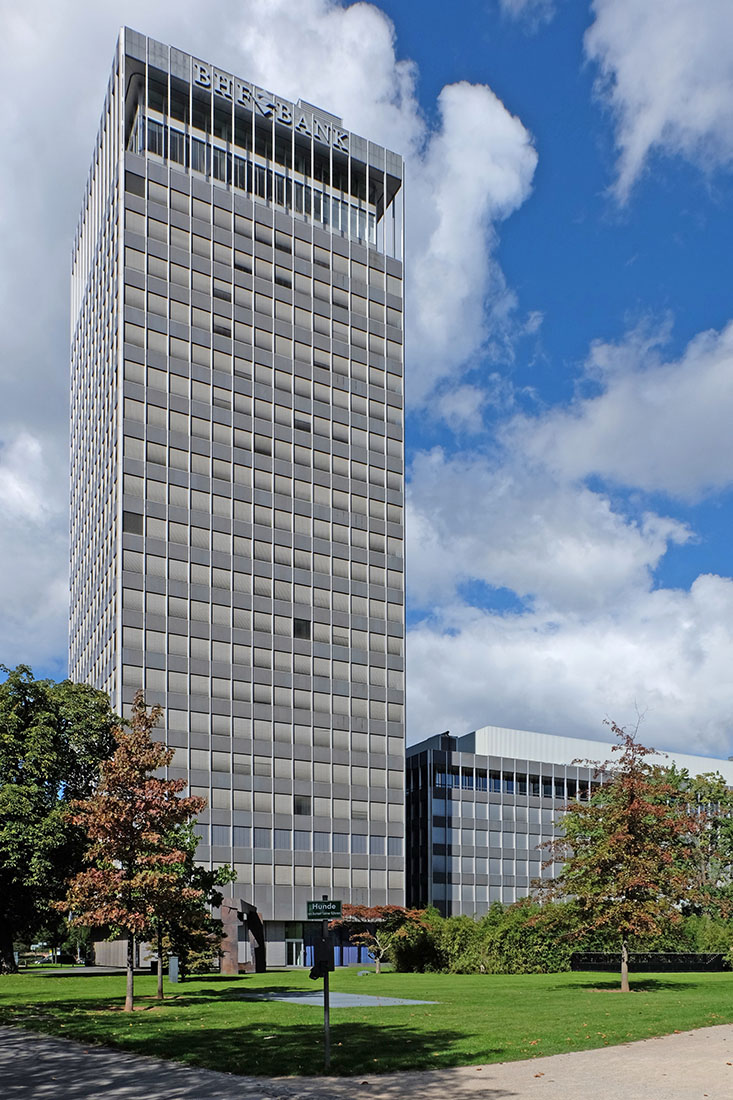 |
 |
 |
 |


BHF-Bank High-Rise Building
Bockenheimer Landstrasse 10, Frankfurt
1962 - 1965
The
Berliner Handels-Gesellschaft, short BHG, was a bank from Berlin
founded in 1856, which had to stop its activities after the Second
World War. In 1948 the company moved its headquarters to Frankfurt,
merging with the Frankfurter Bank in 1970, resulting in the new
Berliner Handels- und Frankfurter Bank, short BHF Bank. As a consequence
of the merger, there was an increased demand for office space. The
BHF-Bank Tower, located in the Frankfurt city district Westend, was
built from 1962 to 1965 according to a design by Franz Joseph Ruf. Only
five years later, the BHF-Bank moved into the building. It is sited in
the so-called Rothschildpark whose building development had been
virtually destroyed during World War II. At the time of its
inauguration, the 23-storey tower was the tallest building in the city
of Frankfurt with a height of 82 meters. The main building in the south
of the site has a square plan measuring 25 by 25 meters and was
realized as a reinforced concrete frame construction. In the northwest a
long drawn-rectangular building wing is attached to the tower. Another
two-story annex, rising above a square ground plan marks the termination
to the northeast. Typical for its time the building lacks any
decoration. Horizontally the building is structured by the change of
circumferential bands of windows and parapet fields. A vertical steel
rod construction surrounds the building in regular intervals. The upper
end of the building is accentuated by an offset of the glass facade,
while the steel rod construction continues vertical in the same position. This results in an
appearance detached from the static impression. The roof edge features
a lettering with company logo. The mentioned parapets originally
consisted of white, Yugoslav Carrara marble. However, this was replaced
by a plastic panel during a renovation. In the 1990s there were plans to replace the building by a substantially larger construction,
due to the increased space requirements. However, the city of Frankfurt
did not approve the submitted project, and the high-rise building by
Sep Ruf became a listed building. As a consequence, the private bank
realized an extension in Offenbach am Main, to solve the problem of
office space.